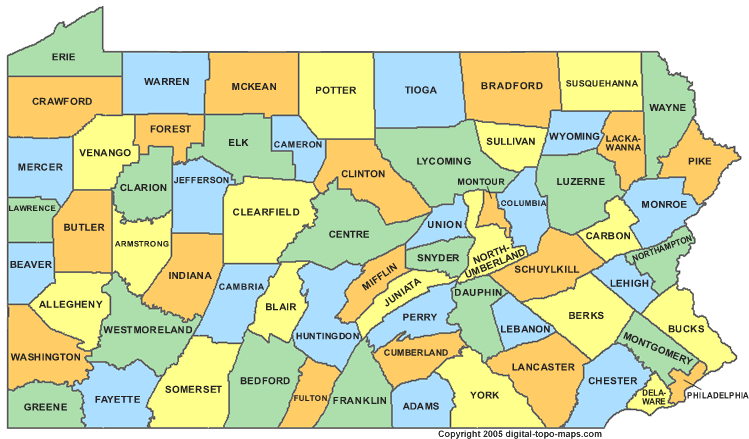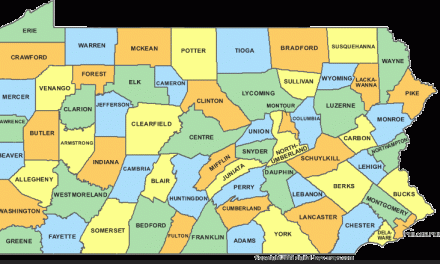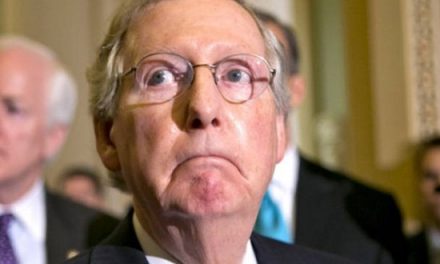Four years ago, Hillary Clinton was favored to win Pennsylvania, but she famously lost the state by just over 44,000 votes. In 2020, Joe Biden won. They are still counting votes from Pittsburgh to Philadelphia, and Biden’s margins will surely grow, but it appears that his victory will be similar in size to Trump’s 2016 squeaker and far less substantial than the 2018 reelection of Gov. Tom Wolf, a Democrat.
Before Election Day, I identified 21 Pennsylvania counties that would help give an early indication of the winner. Because mail ballots were counted after Election Day ballots, and the Democrats’ heavy preference for them, it wasn’t possible to use my method for prognostication, but enough results are in now that we can see how Biden prevailed.
In my pre-election model, I divided Pennsylvania into seven regions: the cities (Pittsburgh and Philadelphia), the Philly suburbs, the Northeast (including Biden’s childhood home, Scranton), the Top T (along the central border with New York State), the Central West (including Johnstown), and two counties in the Northwest and Southwest. Each of the 21 counties I chose saw at least a 10 percentage decline in Hillary Clinton’s performance when compared to Barack Obama’s numbers in 2012.
Below, I’ll show you that the numbers in these counties were remarkably stable and regionally consistent Overall Biden either did as well as Clinton or just a bit better.
[For this analysis, all percentages are of the two-party vote (i.e., it excludes third parties) to make it easier to compare different election cycles.]
One of the most interesting facts is the way Biden in 2020 fared better than Clinton in 2016 but fell behind Democratic Gov. Wolf in 2018. (We’ll get to reasons for Wolf’s performance and what it may or may not say about Biden and Trump in a moment.)
In the Top T region, Trump had held Clinton under 30 percent in all four of my highlighted counties. Two years later, when Wolf won reelection, he did significantly better. Biden, however, only managed to crack 30 percent in Warren County. The Trump loyalists that stayed home in 2018 came back out, but Biden did slightly better, possibly because there was no Green Party candidate on the ballot this time.
| TOP T | 2016 PCT | 2016 vs. 2012 | 2018 PCT | 2018 vs. 2016 | NET GAIN/LOSS (2012-2018) | 2020
PCT |
2020 vs. 2016 | 2020 vs. 2018 |
| BRADFORD | 26 | -11 | 34 | +8 | -3 | 27 | +1 | -8 |
| MCKEON | 26 | -10 | 31 | +6 | -4 | 27 | +3 | -5 |
| SUSQUEHANNA | 28 | -11 | 34 | +6 | -5 | 29 | +1 | -5 |
| WARREN | 29 | -12 | 38 | +9 | -3 | 30 | +1 | -8 |
In the Central West, there was no change at all. Like Clinton, Biden was unable win even a third of the vote in any of the five highlighted counties, but he only lost ground in Elk County, and only by a single percentage point. Interestingly, Gov. Wolf reached 44 percent in both Clinton County and Cambria County (Johnstown), but Biden couldn’t hold those gains. You’ll notice, too, that Biden’s slippage from Wolf’s 2018 results is a couple points worse here than in the Top T counties.
| CENTRAL WEST | 2016 PCT | 2016 vs. 2012 | 2018 PCT | 2018 vs. 2016 | NET GAIN/LOSS (2012-2018) | 2020
PCT |
2020 vs. 2016 | 2020 vs. 2018 |
| CAMBRIA | 31 | -10 | 44 | +13 | +3 | 31 | EVEN | -9 |
| CAMERON | 25 | -10 | 35 | +10 | EVEN | 26 | EVEN | -10 |
| CLEARFIELD | 25 | -11 | 35 | +10 | -1 | 25 | EVEN | -10 |
| CLINTON | 32 | -12 | 44 | +11 | -1 | 32 | EVEN | -12 |
| ELK | 28 | -14 | 38 | +10 | -4 | 27 | -1 | -11 |
In the Northwestern and Southwestern counties where Clinton did 10 points worse than Obama’s 2012 performance, Gov. Wolf not only wiped out those losses in 2018 but improved the numbers in three of the four, making them all competitive. Biden, however, did about the same as Clinton. Greene County still has not reported a lot of their Democratic-friendly mail ballots, so you can discount its percentages.
| NORTHWEST | 2016 PCT | 2016 vs. 2012 | 2018 PCT | 2018 vs. 2016 | NET GAIN/LOSS (2012-2018) | 2020
PCT |
2020 vs. 2016 | 2020 vs. 2018 |
| LAWRENCE | 36 | -10 | 47 | +12 | +2 | 35 | -1 | -11 |
| MERCER | 37 | -11 | 45 | +8 | -3 | 36 | -1 | -9 |
| SOUTHWEST | 2016 PCT | 2016 vs. 2012 | 2018 PCT | 2018 vs. 2016 | NET GAIN/LOSS (2012-2018) | 2020
PCT |
2020 vs. 2016 | 2020 vs. 2018 |
| FAYETTE | 34 | -12 | 49 | +15 | +3 | 33 | -1 | -16 |
| GREENE | 29 | -12 | 46 | +17 | +5 | 24 | -5 | -22 |
The first sign of Biden’s victory emerges in the Northeast. Notice that Biden’s slippage from Wolf’s 2018 performance is only seven points in three of these counties. Also significant, he improved on Clinton’s numbers by two or more percentage points in six of the eight highlighted counties.
| NORTHEAST | 2016 PCT | 2016 vs. 2012 | 2018 PCT | 2018 vs. 2016 | NET GAIN/LOSS (2012-2018) | 2020
PCT |
2020 vs. 2016 | 2020 vs. 2018 |
| CARBON | 32 | -14 | 44 | +11 | -3 | 34 | +2 | -10 |
| COLUMBIA | 33 | -10 | 44 | +11 | +1 | 31 | +1 | -10 |
| LACKAWANNA | 52 | -12 | 65 | +14 | +2 | 54 | +2 | -11 |
| LUZERNE | 40 | -12 | 52 | +12 | EVEN | 43 | +3 | -10 |
| NORTHUMBERLAND | 28 | -12 | 37 | +9 | -3 | 30 | +3 | -7 |
| SCHUYLKILL | 28 | -16 | 44 | +17 | +1 | 30 | +2 | -7 |
| SULLIVAN | 25 | -11 | 37 | +12 | +1 | 26 | +1 | -11 |
| WYOMING | 30 | -13 | 39 | +9 | -4 | 32 | +2 | -7 |
There are still outstanding votes in the Philly suburbs, particularly in Bucks County, so Biden’s numbers will get stronger here. But we can already see that there’s not the same degree of decline from 2018 in this region. These are also really big counties, so a two or three percentage point improvement on Clinton’s 2016 numbers adds up to a lot of extra votes.
| PHILLY SUBURBS | 2016 PCT | 2016 vs. 2012 | 2018 PCT | 2018 vs. 2016 | NET GAIN/LOSS (2012-2018) | 2020
PCT |
2020 vs. 2016 | 2020 vs. 2018 |
| BUCKS | 50 | EVEN | 59 | +9 | +9 | 52 | +1 | -7 |
| CHESTER | 55 | +5 | 62 | +7 | +12 | 58 | +3 | -4 |
| DELAWARE | 62 | +1 | 67 | +6 | +7 | 63 | +2 | -4 |
| MONTGOMERY | 61 | +4 | 68 | +7 | +11 | 63 | +2 | -5 |
Both Pittsburgh and Philadelphia have enough outstanding votes that we can’t very usefully make comparisons yet. It’s notable, however, that Allegheny County, which includes Pittsburgh, is already a little better for the Democratic nominee than it was four years ago. Perhaps Philly will eventually move into positive territory as well, but there’s no giant surge in either city, and the results are nowhere near what Wolf achieved in 2018. This is not a case of energized minority turnout making the difference.
| CITY COUNTY | 2016 PCT | 2016 vs. 2012 | 2018 PCT | 2018 vs. 2016 | NET GAIN/LOSS (2012-2018) | 2020
PCT |
2020 vs. 2016 | 2020 vs. 2018 |
| ALLEGHENY | 59 | EVEN | 68 | +10 | +10 | 60 | +1 | -9 |
| PHILADELPHIA | 84 | -2 | 88 | +4 | +2 | 82 | -3 | -7 |
The picture that emerges is fairly clear. Biden did slightly better than Clinton in the Top T section of the state and perhaps slightly worse in the Southwest and Northwest. This is basically a wash that is mostly significant because Trump needed to improve in his strongholds, and he failed. Biden wanted to improve on Clinton’s numbers in the cities, but if he did so it was only modestly, and he was carried to victory by the Northeast and the Philly suburbs.
My main observation about these less-than-final results is that there is a huge amount of swing in the state in the Republican areas when it comes to voting for governor, but very little when it comes to Trump.
Since Trump will most likely never be on the ballot again, this presents some opportunities for the Democrats. Of course, the Republicans might find that the suburbs will swing their way a bit without Trump holding them down, but that didn’t happen in 2018.
What’s not controversial is that Trump runs up huge numbers in rural areas. But that doesn’t mean those voters are strong or loyal Republicans. They didn’t come out to oppose Wolf. These voters like Trump, but they won’t necessarily turn out for a different Republican. (It’s true 2018 was an off year election and a good one for Democrats, but the differences in turnout in heavily pro-Trump areas suggests that without the former reality show star atop the ticket, it’ll be harder to generate comparable enthusiasm for a different Republican in 2024.) It’s also notable that Clinton’s alleged unlikability with the “deplorables” wasn’t unique to her. Biden didn’t move them much either. His gains with Republicans came in affluent counties with lots of highly educated professionals. He ran stronger in the Northeast than Clinton, possibly aided by his familial roots there.
Trump clearly energized his most fervent supporters in a way that’s in keeping with what’s been seen around the country. It suggests that he’ll have a receptive audience with these fervent supporters as a critic of any Biden administration especially if he keeps a high public profile. But Pennsylvania’s Republican Party has to plan for a future without Trump, and with their reliance on him for rural strength and the damage Trump did to their brand in the suburbs, they have a very big problem.







